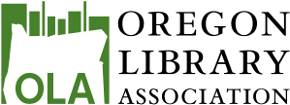Documents of Oregon's Indian TribesPrepared by Tom Stave, University of Oregon The public documents of Oregon's nine federally recognized Indian tribes display the characteristics of both national and state or local governments. They often have treaty-like features because of the sovereign status of tribal governments; but they also resemble documents of cities and counties because tribal governments deal with very local communities and issues. The following is a list of some major categories of public documents of Indian tribes. It is based largely upon an examination of documents of the Confederated Tribes of the Warm Springs Indian Reservation. No library has a comprehensive collection of these documents, but significant holdings may be found in the libraries of the Bonneville Power Administration and the Columbia River Inter-tribal Fish Commission. EXTERNAL RELATIONS 1. Treaties. Treaties concluded before 1883 established the basic framework for the relationships between Indian tribes and the U.S. Government, and many still apply today. The basic compilation of treaties is volume 2 of Indian affairs: Laws and treaties, compiled Charles J. Kappler (GPO: 1903- .) 2. U.S. Laws. U.S. laws form another important part of the complex legal relationship between these sovereign nations. Kappler's volumes (above) contain laws enacted prior to 1971; later laws, such as the Indian Gaming Regulatory Act, are found in standard compilations such as the U.S. Code (especially Title 25) and the Statutes at Large. 3. Tribal-state compacts. Agreements between tribal and state governments have been used to manage such matters as law enforcement, natural resources, social services, and gaming. The Governor's Office negotiates and maintains these agreements for the State of Oregon. 4. Federal documents. The views of Oregon's Indian tribes are often expressed as testimony before Congressional committee hearings, and as contributions to such federal projects as environmental impact statements. INTERNAL AFFAIRS 5. Constitutions. Constitutions provide the basic legal structures and assumptions for tribal governments. 6. Tribal Laws. Under their powers of self-government, tribal councils enact laws that may also be supplemented by regulations. The Warm Springs Tribes, for example, have a "Law and Order Code" that includes these sections: civil actions, probate, domestic relations, offenses, sentences, juvenile code, and traffic code. 7. Legislative records. Meetings and decisions of tribal councils are documented in the form of agendas and minutes. 8. Annual reports. Reports of tribal governments' activities and finances are issued on an annual basis. 9. Budgets. Annual proposed budgets are a good source of information about tribal activities, priorities for the future, and accomplishments of the previous year. 10. Planning documents. Most tribal governments have produced comprehensive land use plans, economic development plans, and other more focused planning reports. These documents are frequently revised, and may have occasional amendments. 11. Environmental documents. These may be produced solely by tribal governments, or may be written in cooperation with federal or state agencies such as BPA, EPA, or various public lands agencies. Forms vary, and include environmental impact statements, integrated resource management plans, and studies of specific issues like salmon, timber, or water resources. 12. Newsletters. Several tribal governments produce newsletters, usually on a monthly basis. 13. Web sites. A number of Oregon's tribes have established official web sites: Confederated Tribes of Siletz Indians: http://ctsi.nsn.us/ In addition, two Northwest inter-tribal organizations have established web sites: Affiliated Tribes of Northwest Indians: http://www.atnitribes.org/ And the Bureau of Indian Affairs' web site contains information that is both general and tribe-specific: http://www.doi.gov/bureau-indian-affairs.html.
|
